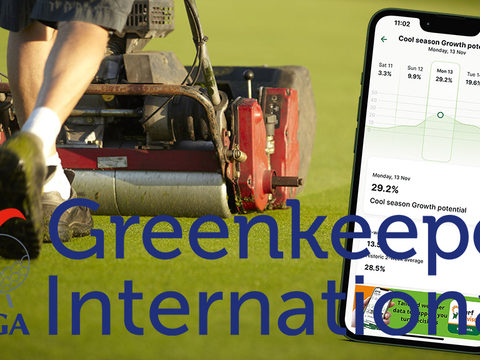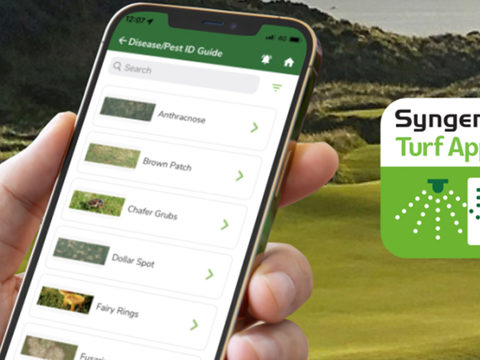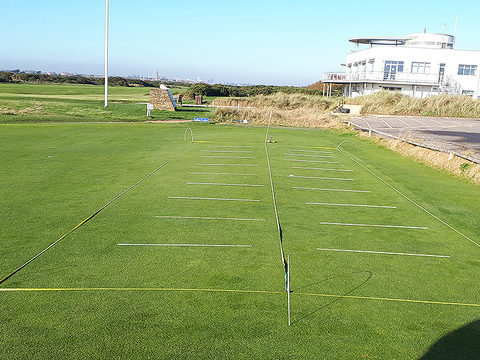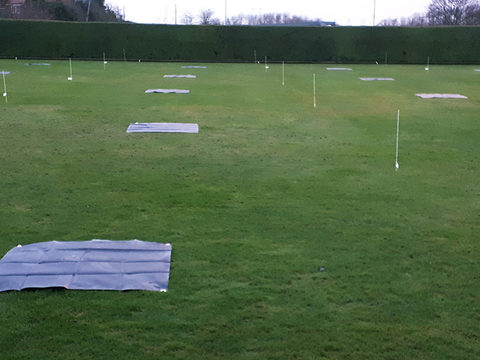Big data adds up

Digital agronomy tools now offer the potential for a positive addition to conventional greenkeeping skills.
As the volume of data being generated and recorded in turf management continues to build up, finding tools that can make best use of the information to aid future decisions becomes ever more important.
Today’s Integrated Turf Management is a constantly moving picture that requires fluid adaptation of all agronomic inputs to maintain everything in balance. That can involve changes in management practice, timing of actions or in the products used.
Decisions on what actions to take and which products to use has to be driven by data, if the success of results are to be assured, advocates Syngenta Turf Business Manager, Daniel Lightfoot, MSc MG MBPR (below).

With ever increasing pressure on conventional agronomic techniques, Syngenta research has demonstrated that some new biological products can achieve effective levels of pathogen or pest control. However, the trials show results with biologicals can often be inconsistent and less reliable, compared to expectations with tried and tested chemical products.
Digital tools will underpin the future of the performance of biological products in turf management to optimise their use. That will be crucial in the move to reduced reliance on chemical applications, where accurate biological treatments can achieve the desired results.
With nematodes aimed at targeting leatherjackets, for example, studies have shown where an appropriate nematode species is applied direct to the pest, they can achieve a high level of kill - even of larger larvae. The challenge is to have the appropriate conditions and activity at the time of application, to bring the nematodes into contact with their target.
One new avenue of research addresses managing moisture levels in the soil. That can help attract the larvae into a target zone, as well as providing a crucial film of moisture on soil particles necessary for nematodes to survive and seek out their prey.
At an individual course level, records of soil moisture under different conditions – both historic and current at the treatment timing - is crucial to enable accurate irrigation scheduling and moisture management. That will help to achieve more reliable results from both nematodes and Acelepryn applications.
On a larger scale, recording data of adult crane fly and chafer pest numbers and location, using the Syngenta Pest Tracker tool, has been instrumental in building a picture of when and where to make treatments at the optimum timing to target most vulnerable larvae stages. Over recent seasons the vast wealth of Pest Tracker data has helped to focus attention on later treatments for leatherjackets, as well as adapting timing of aeration practices.
The later treatment has also coincided with wetter weather, that can prove beneficial in maintaining soil moisture to optimise results with integrated nematode and Acelepryn applications.
As weather patterns are changing, with more extreme and unseasonal events, forecasting is becoming ever more important. Many golf courses now have a weather station of their own, generating huge volumes of valuable local data and picking up trends over time that can help to influence decision making.
Allied to that, years of historic weather data is available for any site on the Syngenta Turf website, along with historical disease risk records extending back for more than a decade. Compiled together, it’s an incredibly powerful tool to pinpoint potential problem timings, and in time to make plans.
Now, the wealth of available global weather data has been tapped into to select key aspects most relevant to turf management, with the WeatherPro tool. Capable of utilising weather forecasts from UK, European and global sources, it presents forecasts including soil temperatures, evapotranspiration, rainfall and winds in a series of active maps that will help guide daily decision making.
Ever more powerful use of data comes with the capability to integrate decision making with forecasts of disease risks.
First and foremost disease risk forecasts enable better timing of preventative fungicide applications when there is a high chance that infection could break out, but before any signs are visible or damage caused to the turf surface. That has become even more important with the reduced product armoury, and all available options being most effective when applied preventatively.
STRI research with Syngenta has consistently shown that fungicide applications governed by microdochium patch disease risk forecast maintained more effective disease control and better turf quality, using fewer fungicide treatments over the course of the season - compared to routine application or treatment when disease symptoms were visible.
New ITM anthracnose trials at STRI this season further demonstrated the roll of disease forecasting. Risks were seen to be increasing rapidly in the hot and humid weather in mid-July – a full month ahead of scheduled treatment timings. The trial protocol, including elements of nutrition, biostimulant, PGR, pigment and fungicide treatments, was pulled forward by more than three weeks, to mitigate against the risk of attacks.
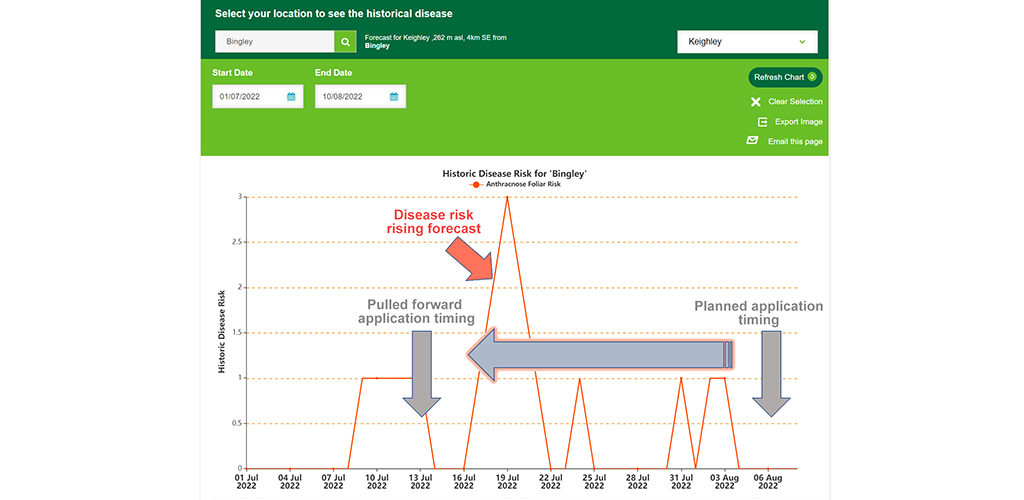
When the incidence of disease outbreaks in the untreated control plots was matched against the disease risk forecasts (Fig 1, above), it showed a very clear correlation that completely vindicated the decision to adapt treatment timing. Such an action on a golf course could have averted a serious disease outbreak.
The fully replicated complex trial of interacting ITM elements will run through until the autumn, to fully assess the conclusions from the vast amount of data generated. However, initial results have already shown the strength of FR321 preventative fungicide treatments to completely prevent anthracnose, along with the value of nutrition to maintain turf quality and Hicure biostimulant to help plants through stressful periods.
Disease risk forecasting and recording is also immensely valuable throughout the ITM planning process. If historic disease risk records were to show a particular course was subject to a high risk of early microdochium patch pressure in August, for example, there may be the case to adapt maintenance timing, or the intensity of actions, to avoid added stress through that time – as well as focusing on other ITM actions to minimise risk.
As digital solutions continue to develop, it can begin to bring ever more sophisticated tools - some of which have hitherto only been the preserve of research and academia – into the everyday hands of greenkeepers.
The Growing Degree Day Calculator, for example, can automatically create a personalised GDD plan for any course, which would have taken an individual greenkeeper many hours each week to keep up to date. Now it is instantly available on your phone, as well as sending email alerts of trigger points if requested. It has proven the most popular digital tool so far on the Syngenta website.
The next step has been pulling the elements into mobile apps, that can make them more accessible and easier to use for greenkeepers to use every day. The big data processing capacity of today’s phones, along with the almost unlimited cloud computing capability, enable interactive apps designed to be tailored to individual sites and to support practical and agronomic decision making.
Harnessing the information of the data that is being generated today, opens the opportunity of increasingly accurate and reliable preventative modelling for the future. The future of disease control lies in replacing regular chemical applications, with digital disease prediction and more targeted applications using all the resources available, along with ever greater regulatory integration an compliance.
Digital agronomy is never going to take away the skills and experience of greenkeepers in managing their turf and responding to situations, but it does have the real power to support decision making and reduce the risks of unforeseen events – together which adds up to delivering consistently better results.

